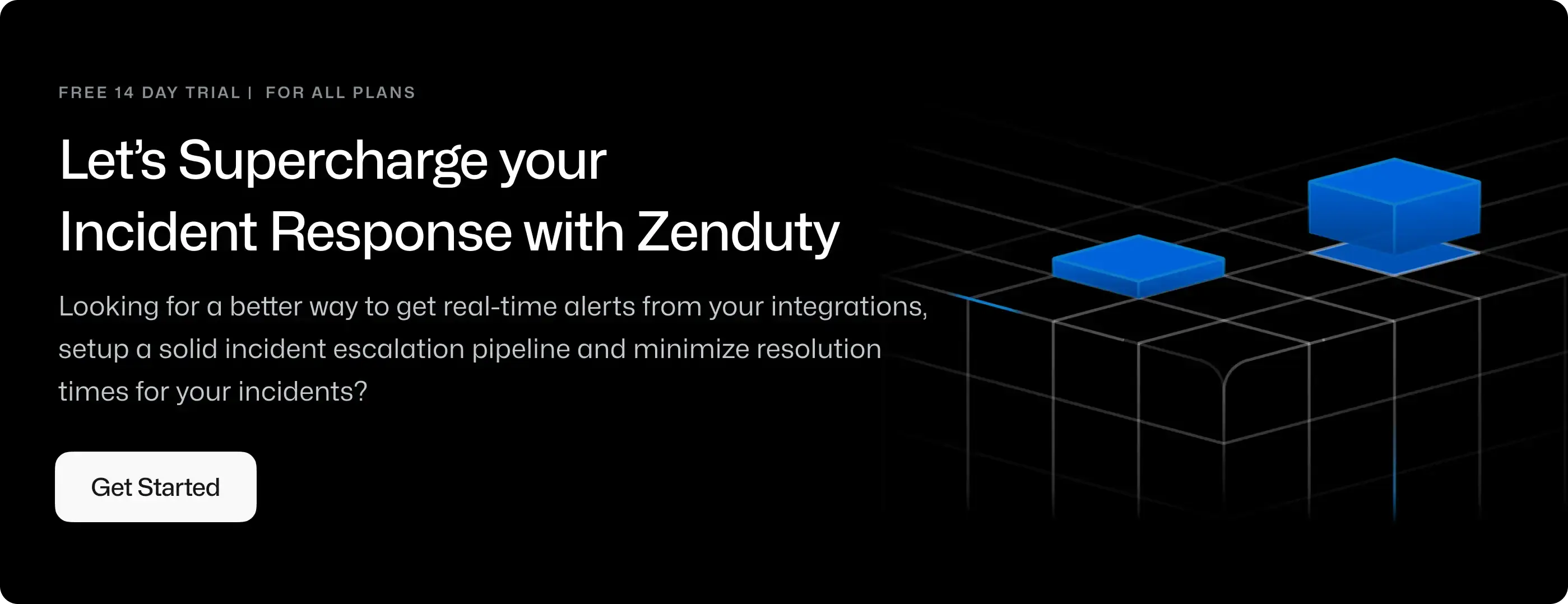StatusPage(2-Way) Integration Guide
StatusPage is the best way for web infrastructure, developer API, and SaaS companies to get set up with their very own status page in minutes.
What can Zenduty do for StatusPage users?
With StatusPage's Integration, Zenduty sends new StatusPage downtime alerts to the right team and notifies them based on on-call schedules via email, text messages(SMS), phone calls(Voice), Slack, Microsoft Teams and iOS & Android push notifications, and escalates alerts until the alert is acknowledged or closed. Zenduty provides your NOC, SRE and application engineers with detailed context around the StatusPage downtime alert along with playbooks and a complete incident command framework to triage, remediate and resolve incidents with speed.
Whenever StatusPage service triggers an alert based on a predefined condition, Zenduty will create an incident. When that service is back up, Zenduty will auto-resolve the incident.
Zenduty can also update downtime statuses in StatusPage when a new Incident is created on Zenduty. The status would then be in sync with Zenduty's Incident, allowing for a 2-way integration beween Zenduty and StatusPage.
You can also use Alert Rules to custom route specific StatusPage alerts to specific users, teams or escalation policies, write suppression rules, auto add notes, responders and incident tasks.
To integrate Zenduty with StatusPage, complete the following steps:
In Zenduty:
-
To add a new StatusPage integration, go to Teams on Zenduty and click on the team you want to add the integration to.
-
Next, go to Services and click on the relevant Service.
-
Go to Outgoing Integrations and then Add New Integration. Give it a name and select the application StatusPage(2-Way) from the dropdown menu.
-
Go to Configure under your StatusPage (2-Way) Integration.
-
Here, you have to input your StatusPage API, which can be found by :
- Logging in to your account at https://manage.statuspage.io/login
- Click on the User Profile icon at the top-right.
- Click the Manage Account link under the menu which appears.
- Click on the API tab and copy the API key.
-
Paste the API key in Zenduty and Proceed by clicking Authenticate StatusPage.
-
If the API is authenticated, Select the Page & then one Component of that Page.
-
Then, write the description of the incident (Which will be common to all incidents incited by this integration.)
-
Copy the Webhook URL (For 2-Way integration) and Save the integration.
In StatusPage:
-
Login. Go to Notifications -> Subscribers. Click on Add Subscriber.


-
Under Subscriber Type select Webhook, enter the Webhook URL and a valid email address.
Now, we can monitor the incidents that are made by Zenduty, and the changes are reflected in the StatusPage incident is reflected in the Zenduty incident.
-
StatusPage is now integrated.
